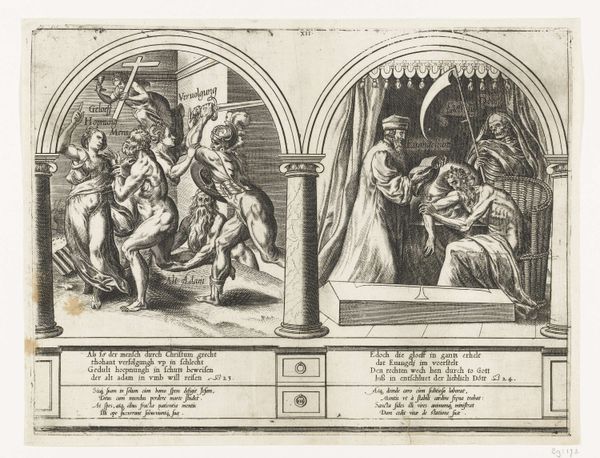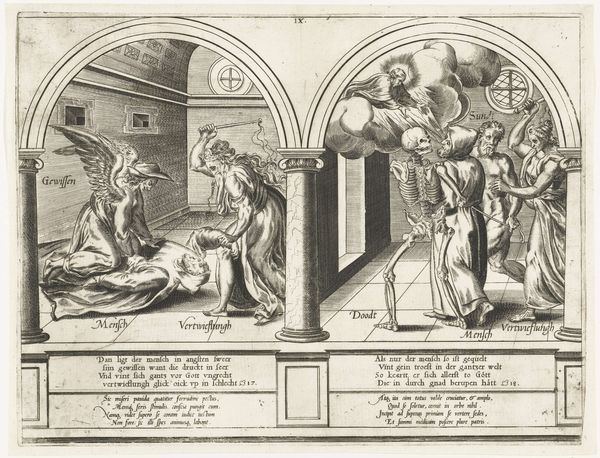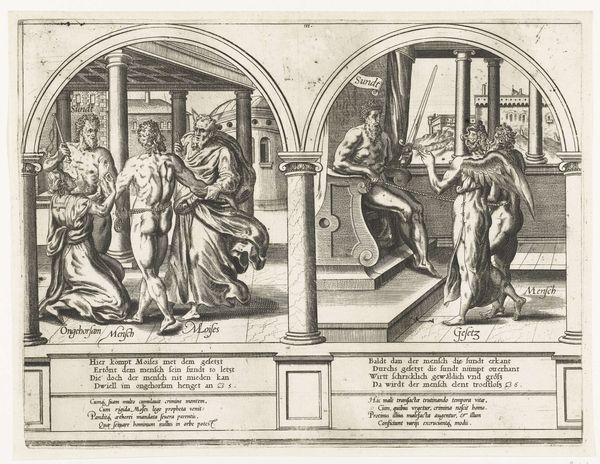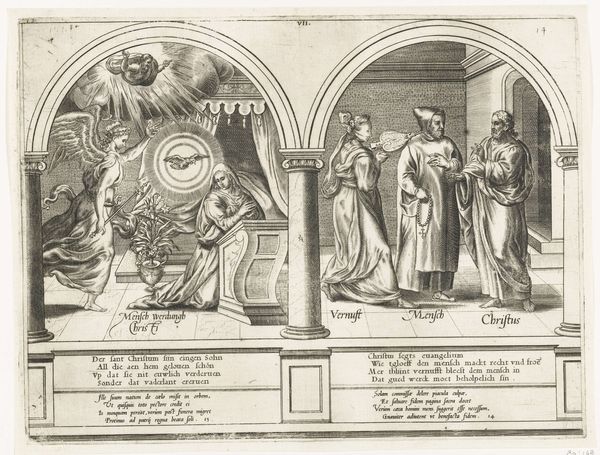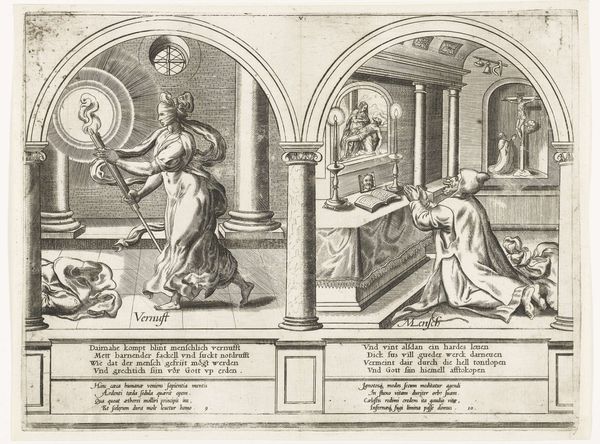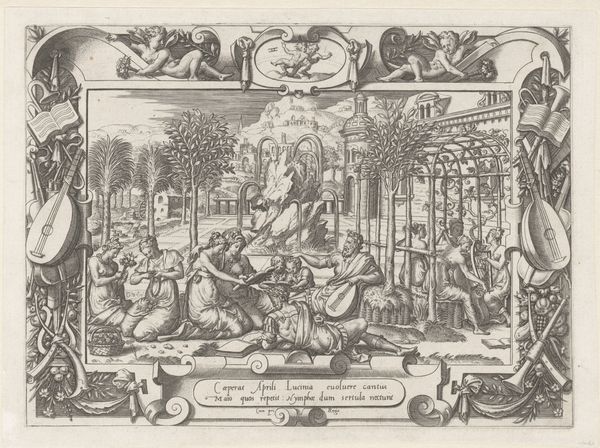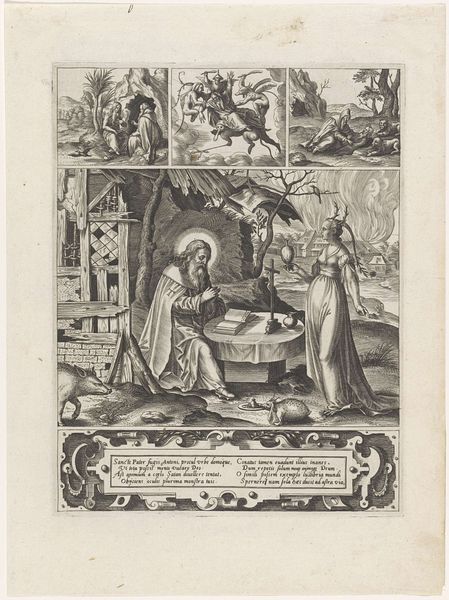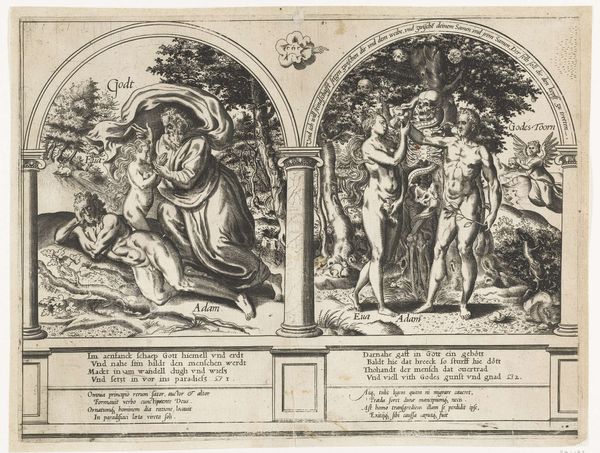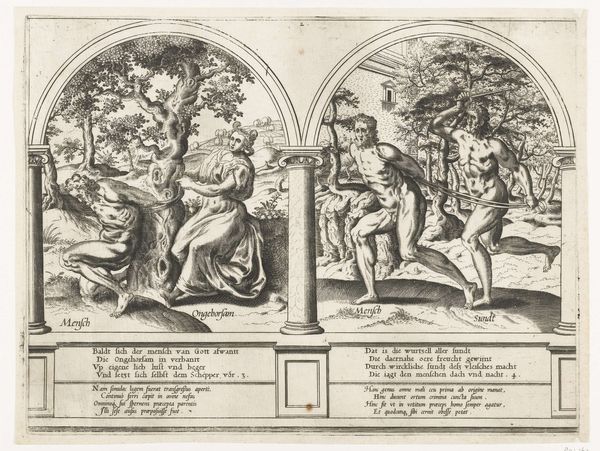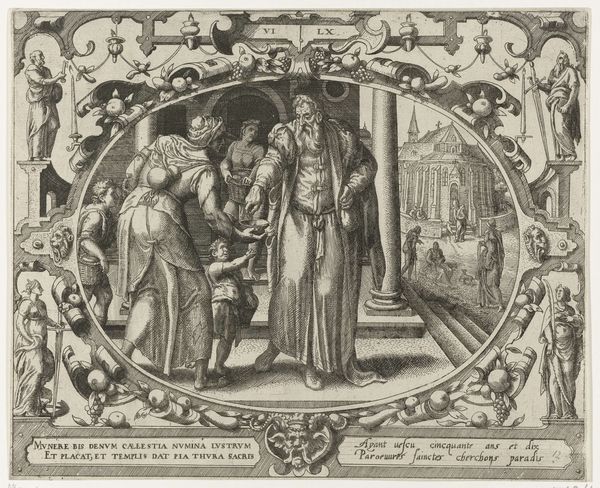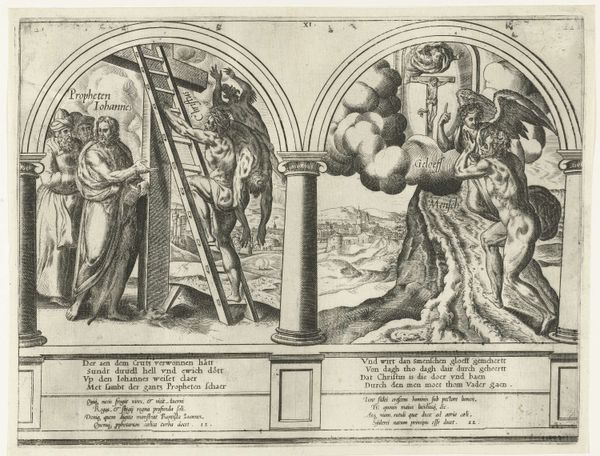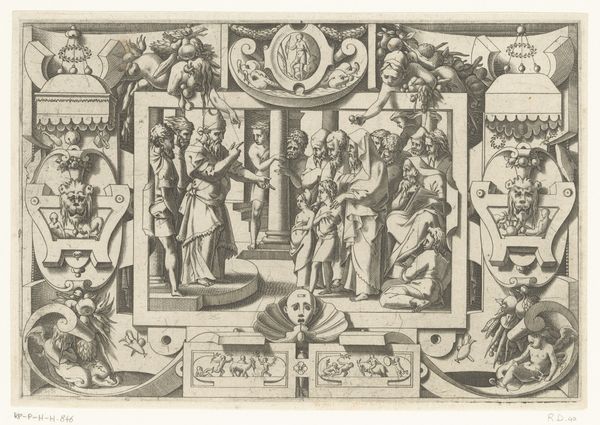
Vernuft en de Mens dragen Goede Werken / de Mens verlaten door zijn Goede Werken 1546 - 1562
0:00
0:00
franshuys
Rijksmuseum
print, engraving
#
allegory
#
narrative-art
# print
#
figuration
#
11_renaissance
#
line
#
history-painting
#
northern-renaissance
#
engraving
Dimensions: height 274 mm, width 361 mm
Copyright: Rijks Museum: Open Domain
Editor: This print, made by Frans Huys between 1546 and 1562, is called "Vernuft en de Mens dragen Goede Werken / de Mens verlaten door zijn Goede Werken". The duality is really striking - two scenes, so contrasting. I’m curious, how do you interpret the narrative presented here, particularly considering the historical context? Curator: This piece offers a fascinating commentary on morality and society during the Reformation. Huys, likely working with a designer like Pieter Bruegel the Elder, presents us with two possible trajectories. On the left, we see "Vernuft" (Understanding) and "Mens" (Mankind) supporting "Goede Werken" (Good Deeds), leading towards a prosperous, perhaps even heavenly, citadel. On the right, "Mens" is fallen, abandoned by "Goede Werken", and assailed by figures representing sin, death, and torment. Editor: So, it’s about choices and consequences? It almost feels like a visual sermon. Curator: Precisely. Consider the time period. The rise of Protestantism questioned the Catholic Church's emphasis on good works as a path to salvation. Prints like these circulated widely, influencing public opinion. Note how the composition itself – the light and orderly scene versus the chaotic and shadowed one – reinforces the intended message. Who benefits from promoting this particular message, and why? Editor: I see your point. It’s not just a religious statement, but a socially charged one, too. Were these prints often commissioned by religious authorities then, or were they purchased by lay people? Curator: Often, these were made to appeal to the broader population as accessible items in a world before mass media, used as a method for shaping the cultural narrative of the time. Also, what about the inscriptions beneath each scene? The messages are designed to steer your understanding. How effective do you think those words are in influencing the imagery, even now? Editor: Thinking about the inscription really underscores how the artist, or rather, the printmaker, intended for this to be received. I hadn't considered it like that at first. Curator: Exactly. Art doesn't exist in a vacuum. Exploring the socio-political context unlocks a deeper understanding. I hope it will help the students in critically thinking about images beyond the artistic interpretation. Editor: I think it does that and it opens up interesting avenues for exploring how visual media shapes societal views.
Comments
No comments
Be the first to comment and join the conversation on the ultimate creative platform.
